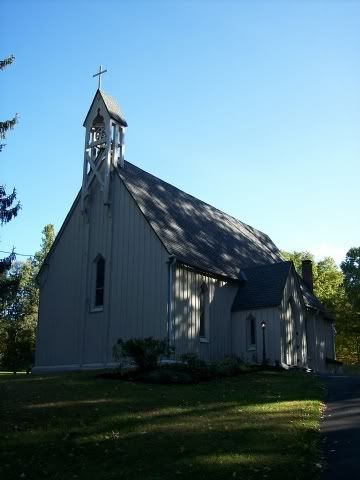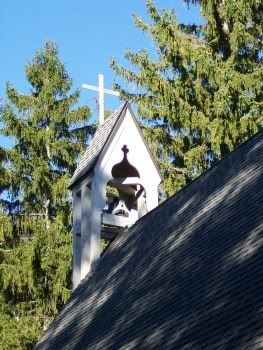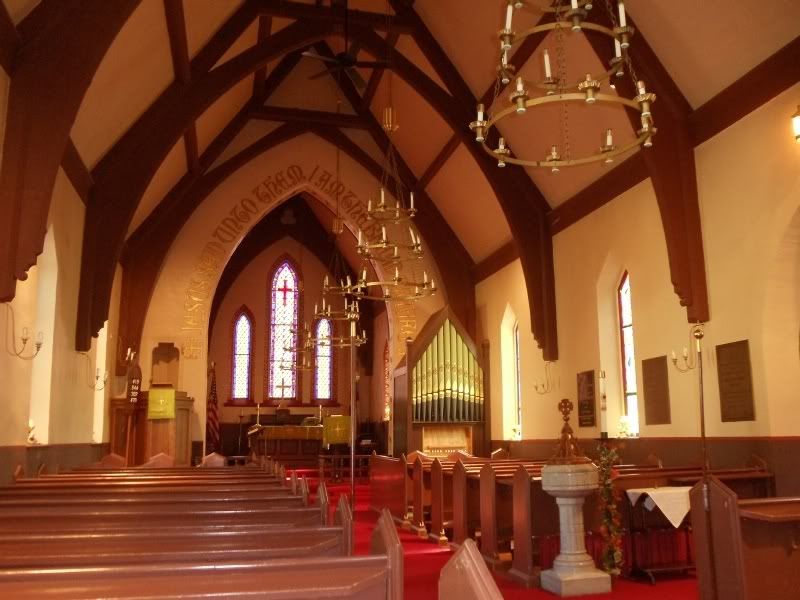 |
The wood frame, board-and-batten church was designed by Richard Upjohn (1802-1878), an English-born architect who is best known for his many Gothic Revival churches including Trinity Church on Wall Street in Manhattan. Upjohn was also a leader in developing the profession of architecture in the United States, serving nineteen years (1857-1876) as the founding president of the American Institute of Architects.
Completed in 1852, the church has a simple nave, an articulated chancel, an entry porch and roof-top bell tower, all executed in wood. The roof is carried on simple interior timber arch struts which curve gently upward. Behind the chancel is a triplet of stained glass lancet windows. The simple interior includes church furniture designed by Upjohn.
The church's design reflects principles of the high church movement of American Episcopalians in which Upjohn played an important part.
 |
In 2007 the church was again included on the National Register, this time as a part of the Copake Iron Works Historic District which recognizes the area's historical and industrial significance.
Editor's Note: Dale Petersen, AIA, a member of The Friends of Taconic State Park History Advisory Board, is an architect with the New York City Department of Design and Construction. He and his wife Louise, also a member of the History Advisory Board, have owned a home in Copake Falls for twenty five years. He has a special interest in the hamlet's historic structures.

